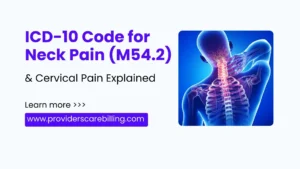Accurate billing serves as the basis of clean claims and speedy reimbursement. Errors can lead to thousands of dollars in payment denial or delays for medical imaging providers. A frequently utilized code in imaging is CPT code 70450, which pertains to imaging codes for a head CT scan without contrast. However, many providers continue to bill this service incorrectly.
From audit flags to rejected claims, the consequences are serious. This article covers everything you need to know about CPT 70450, including documentation compliance risks, billing pitfalls, and how to mitigate them.
What Is CPT 70450?
70450 CPT code description refers to a head CT scan performed without using any contrast material. In emergency departments and outpatient clinics, this CT scan is most commonly performed because in any case of head issues and unconsciousness, it’s important to check for issues in the head.
Common clinical symptoms for the 70450 procedure code include persistent headaches, trauma, shakiness, and early stroke symptoms. If contrast material is compulsory, the codes 70460 or 70470 should be used instead.
Documentation requirements
For CPT code 70450, payers review documentation closely. Clinical document must defend why a CT scan head without contrast is required.
You must document:
· Head injury, loss of consciousness (LOC), and neurologic deficits, if applicable.
· Duration and intensity of the issue
· Justification for non-contrast imaging
· If your report is billed globally, attach the radiology report to the claim
· If billed separately, use modifier 26 for the professional component and modifier TC for the technical component.
When CPT 70450 should not be used
Don’t use CPT code CT head no contrast when contrast is used. In that case, use 70460 with contrast.
Avoid these errors:
· Justification for CT and MRI scans is ignored
· Wrong use of CPT CT brain for facial or orbital imaging.
· Billing for CPT 70450 alongside cross-service overlaps without supporting documents.
· Using code for CT scan of the head with contrast when contrast is not used.
Real-life clinical examples
· Scenario 1: A patient is evaluated and treated as an outpatient. Head trauma is documented, and there is no loss of consciousness. CPT 70450 is appropriately billed with S06.0X0A.
· Scenario 2: A patient presents with ischemic stroke. The provider performs a head CT without contrast material (70450) and angiography (70496). Clear notes justify both tests, and the insurer pays without dispute.
· Scenario 3: The same patient comes with chronic headaches. The 70450 claim is denied because the notes fail to explain why a scan is needed. Adding details about vision changes, increased frequency, and a family history of aneurysms strengthens medical necessity.
Coding Combinations and Modifiers
· Most practices pair CPT code 70450 with E/M codes, such as an emergency visit or neurology consult. When a separate physician reads the image or the facility provides only equipment, append modifier 26 for interpretation and TC for technical components.
· Use modifier -59 to unbundle studies unless clinical facts require, for example, when a second scan occurs later the same day to answer a different question.
· Don’t split the global services unless you are in a hospital or an outpatient department that allows split-billing.
Local Coverage Determinations (LCDs) and Payer Guidelines
Citing LCD 70450 is critical when billing Medicare. Each contractor outlines approved ICD-10 diagnosis codes and limits on how often they can be ordered.
Typical codes include:
· R55-syncope
· R51-headache
· S06.0X0A-concussion
Always review the current LCD updates from your regional MAC before submitting claims. Private insurers may request prior approval, especially for repeat studies
Employ tools such as the Medicare National Coverage Determination search or payers’ portals to see how to exactly document 70450.
Compliance and Audit Readiness
Using code 70450 too often without a strong justification raises alarms. Red flags for an audit are:
· Routine visits repeatedly tagged with 70450
· Clinical records that fail to describe obvious signs
· Several head scans filed within a short period
Run an internal audit each quarter. Pair every 70450 claim with the noted symptoms and the matching ICD-10 codes. Store all imaging reports so they are easy to find if the insurer reviews payments.
Technology improvements in billing accuracy
Today, many clinics rely on EHR-linked coding modules or AI checkers that scan a claim before submitting it. Such programs line up ICD-10 entries with CPTs like 70450 automatically.
Computer-assisted coding can catch the small slips that happen while selecting the CPT codes for CT scans. It can reduce human errors. High technology platform even warns you when the 70480-brain or sinus CT is billed in place of 70450.
Arrange regular workshops for billing teams and always test your vendor database for the latest CT codes and their rules.
Tips to improve billing accuracy
· Choose the right description code; 70450 applies only to a non-contrast CT of the head.
· Learn the language and know why CPT codes for head CT exist, so you don’t confuse them.
· Read local coverage guidelines and check that a diagnosis falls under the benefit before claiming it.
· Use the right modifiers: Whether you’re billing Medicare or submitting a bundled service, use the correct modifier.
· Do not assume anything: Base your code on the radiologist’s signed report.
· Train staff regularly so the team stays updated with today’s coding trends.
· Use internal audit tools to spot billing problems before the claim leaves your office.
Final Review Checklist
Before sending every claim, ask yourself:
· Did the radiologist confirm that no contrast was used?
· Is the order wording clear and complete?
· Can every ICD-10 code used be supported in the 70450 LCD?
· Did you avoid pairing 70450 with any bundled codes?
· Are you adhering to the payer’s specified billing guidelines?
Your document is ready to go if the answer to all these questions is yes. This checklist will help you get your money without any delay.
Summary
Though the 70450 descriptor seems straightforward, billing it correctly requires care. Always link documentation to medical necessity, especially for trauma or altered consciousness.
Use appropriate modifiers when dividing a service. Check the 70450 LCD and payer edits before each claim. Watch for errors, like listing a head CT CPT code without supporting notes. Whether you billing manager or care provider, compliance secures cash flow and shrinks audit risk. A trustworthy, experienced firm can shore up internal controls and slash preventable errors. So contact an experienced billing team today and say bye-bye to denials and delays.
In cases where a CT scan is used to evaluate cognitive or neurological symptoms, follow-up assessments like psychological or neuropsychological testing (CPT Codes 96136 & 96137) may be essential to provide a deeper understanding of the patient’s condition.




